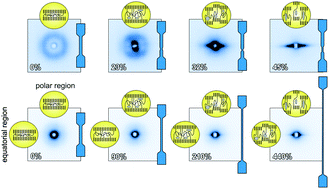The rubber particle size to control the properties-processing balance of thermoplastic/cross-linked elastomer blends
Abstract
The influence of the number-averaged

* Corresponding authors
a
Laboratory of Polymer Technology, Department of Chemical Engineering and Chemistry, Eindhoven University of Technology, P.O. Box 513, Eindhoven, 5600 MB, The Netherlands
E-mail:
J.G.P.Goossens@tue.nl
Fax: (+31) (0)40 247 6999
Tel: (+31) (0) 247 3899
b Dutch Polymer Institute, P.O. Box 902, Eindhoven, 5600 AX, The Netherlands
c DSM Elastomers R&D, P.O. Box 1130, Geleen, 6160 BC, The Netherlands
The influence of the number-averaged

 Please wait while we load your content...
Something went wrong. Try again?
Please wait while we load your content...
Something went wrong. Try again?
R. M. A. l'Abee, M. van Duin, A. B. Spoelstra and J. G. P. Goossens, Soft Matter, 2010, 6, 1758 DOI: 10.1039/B913458A
To request permission to reproduce material from this article, please go to the Copyright Clearance Center request page.
If you are an author contributing to an RSC publication, you do not need to request permission provided correct acknowledgement is given.
If you are the author of this article, you do not need to request permission to reproduce figures and diagrams provided correct acknowledgement is given. If you want to reproduce the whole article in a third-party publication (excluding your thesis/dissertation for which permission is not required) please go to the Copyright Clearance Center request page.
Read more about how to correctly acknowledge RSC content.
 Fetching data from CrossRef.
Fetching data from CrossRef.
This may take some time to load.
Loading related content
